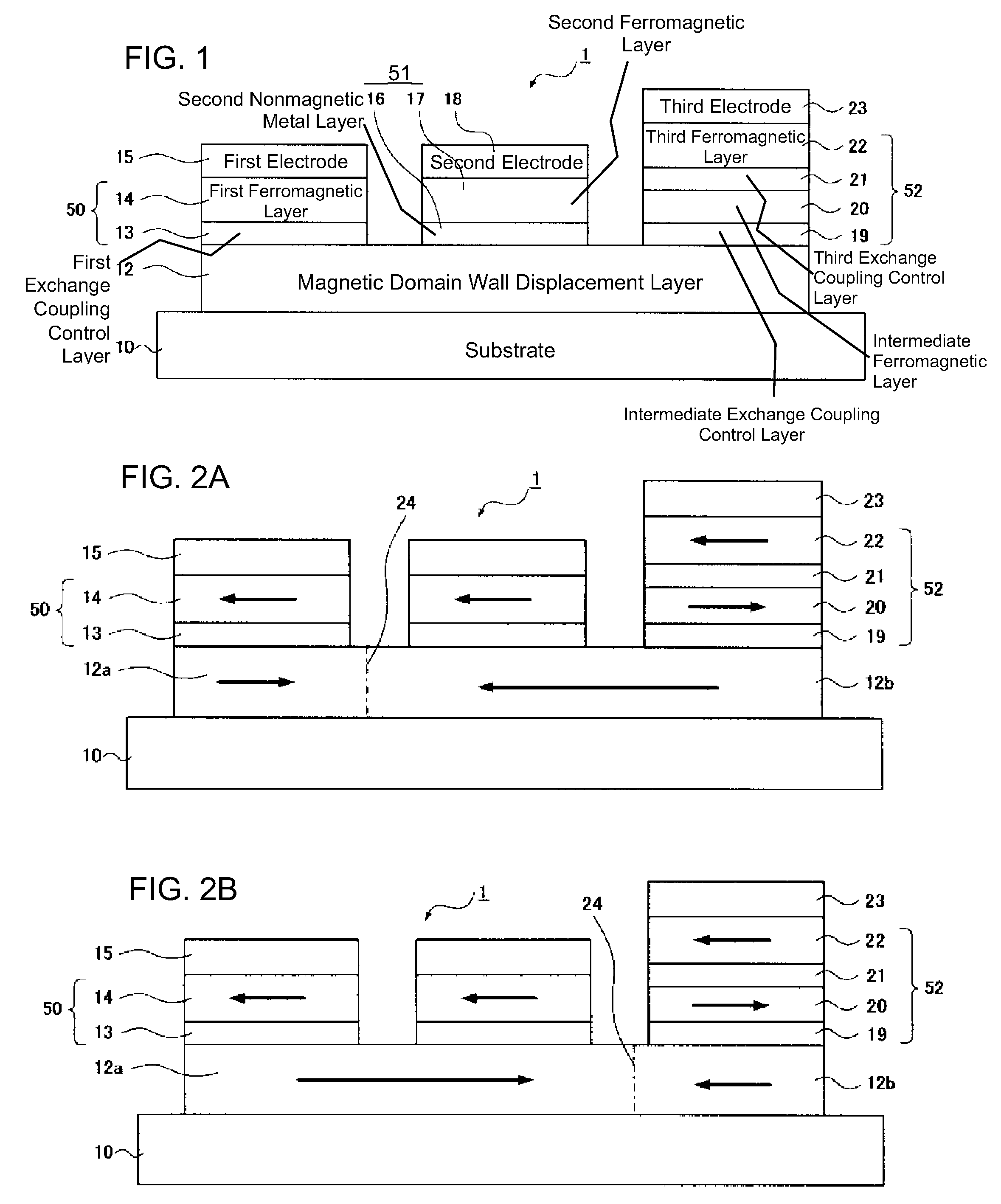Spin injection magnetic domain wall displacement device and element thereof
a magnetic domain wall and displacement device technology, applied in the direction of magnetic bodies, instruments, transportation and packaging, etc., can solve the problems of increasing thermal fluctuation, random displacement of the position of the magnetic domain wall by thermal agitation, and inability to keep the magnetization of the recording cell
- Summary
- Abstract
- Description
- Claims
- Application Information
AI Technical Summary
Benefits of technology
Problems solved by technology
Method used
Image
Examples
first embodiment
[0042]FIG. 1 is a schematic cross sectional view for explaining an example of the basic arrangement of a spin injection magnetic domain wall displacement element 1 according to the invention. On a substrate 10, a magnetic domain wall displacement layer 12 is formed. First, second, and third magnetic layer groups 50, 51, 53 are formed in this order on one side of the magnetic domain wall displacement layer 12. The first magnetic layer group 50 is formed on one end of the magnetic domain wall displacement layer 12 and a first electrode 15 is formed on the first magnetic group 50. On the other end of the magnetic domain wall displacement layer 12, the third magnetic layer group 52 is formed and a third electrode 23 is formed on the third magnetic layer group 52. At a position between the first magnetic layer group 50 and the third magnetic layer group 52, the second magnetic layer group 51 is formed on the magnetic domain wall displacement layer 12 and a second electrode 18 is formed o...
second embodiment
[0078]FIGS. 6A and 6B are schematic cross sectional views for explaining the operation principle of the example of the arrangement of the element of the second embodiment according to the invention. In each of the magnetic layers in the element shown in FIG. 5, the direction of magnetization thereof is shown with an arrow. The magnetic domain wall displacement layer 12 is divided by a magnetic domain wall 24 into the magnetic domain wall displacement layer 12a on the first electrode 15 side and the magnetic domain wall displacement layer 12b on the third electrode 23 side. The arrangement shown in FIG. 5 is the minimum unit of the element and the necessary number of the elements disposed on the same substrate to form a desired device. Circuits and driving elements for driving the elements according to the invention can be also arranged on the same substrate.
[0079] The substrate 10, the first electrode 15, the first ferromagnetic layer 14, the first exchange coupling control layer 13...
PUM
 Login to View More
Login to View More Abstract
Description
Claims
Application Information
 Login to View More
Login to View More - R&D
- Intellectual Property
- Life Sciences
- Materials
- Tech Scout
- Unparalleled Data Quality
- Higher Quality Content
- 60% Fewer Hallucinations
Browse by: Latest US Patents, China's latest patents, Technical Efficacy Thesaurus, Application Domain, Technology Topic, Popular Technical Reports.
© 2025 PatSnap. All rights reserved.Legal|Privacy policy|Modern Slavery Act Transparency Statement|Sitemap|About US| Contact US: help@patsnap.com



